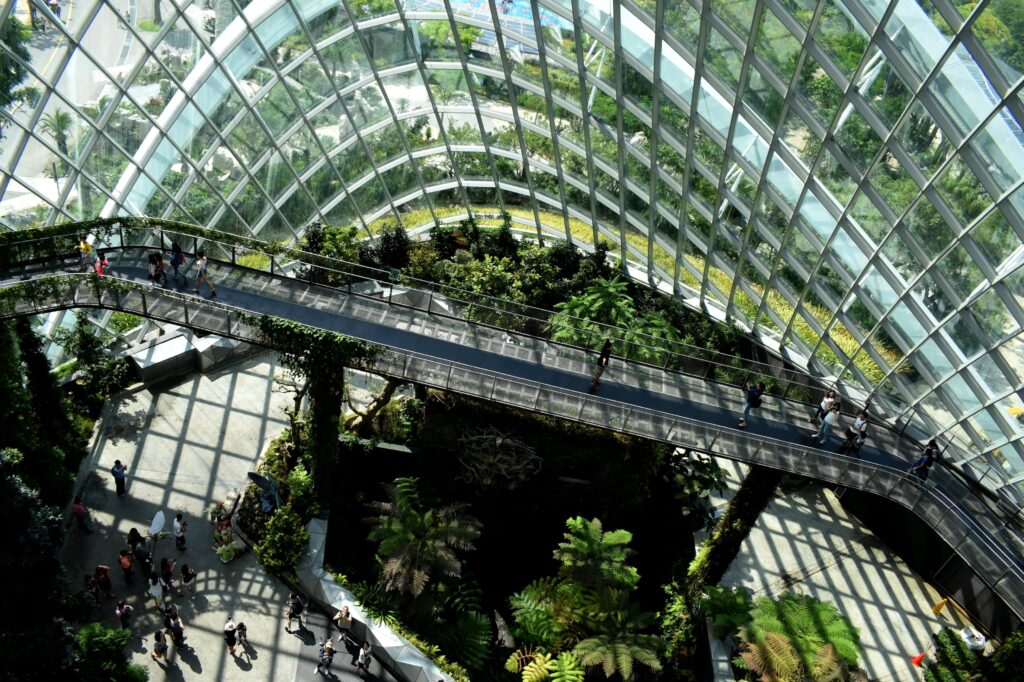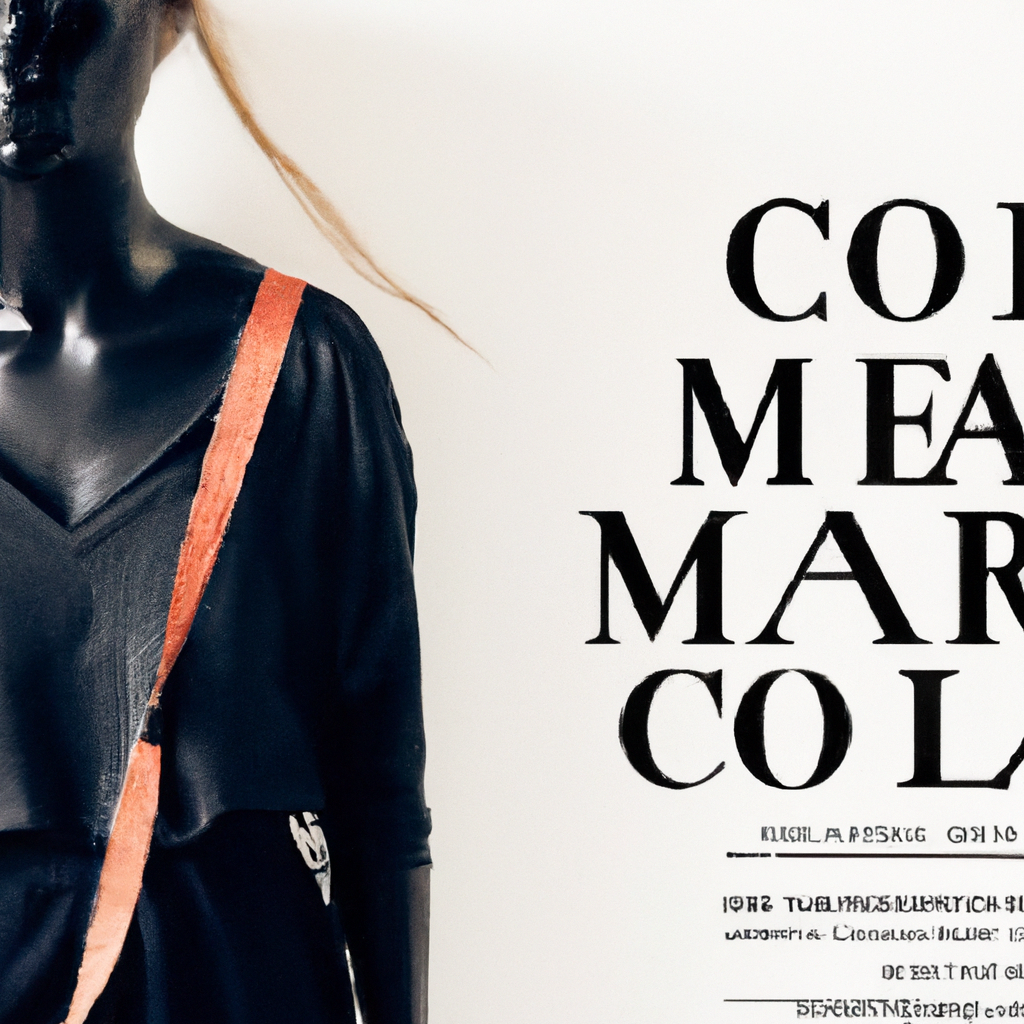What Are The Environmental And Social Benefits Of Slow Fashion: Introduction
In today’s fast-paced world, it’s easy to get caught up in the chase for the latest trends and the constant need for new clothing. However, have you ever asked, “What Are The Environmental And Social Benefits Of Slow Fashion?” Slow fashion, a movement that promotes ethical and sustainable practices in the fashion industry, not only helps to reduce waste and pollution but also fosters fair treatment of workers and encourages a more thoughtful and mindful approach to our clothing choices. By adopting slow fashion principles, you can play a part in creating a more environmentally conscious and socially responsible industry.
Reduced Environmental Impact
Decreased Waste Generation
One of the significant benefits of slow fashion is its contribution to decreased waste generation. Slow fashion promotes the concept of reducing, reusing, and recycling, which helps to minimize the amount of clothing ending up in landfills. By encouraging consumers to invest in high-quality, durable garments that are designed to last, slow fashion reduces the need for frequent replacements and therefore decreases the amount of clothing waste generated.
Reduced Resource Consumption
Slow fashion also aims to reduce resource consumption. Unlike fast fashion, which relies heavily on the extraction and utilization of non-renewable resources, slow fashion focuses on utilizing sustainable materials and production methods. By using eco-friendly fibers such as organic cotton, hemp, and bamboo, slow fashion minimizes resource depletion and encourages responsible consumption practices.
Lower Carbon Footprint
The production, transportation, and disposal of clothing contribute to greenhouse gas emissions and climate change. Slow fashion seeks to lower the carbon footprint associated with the fashion industry by adopting sustainable production techniques, supporting local sourcing, and promoting ethical manufacturing processes. By reducing the need for long-distance transportation and opting for environmentally friendly materials and practices, slow fashion helps to mitigate the negative environmental impacts of the fashion industry.
Less Water Pollution
The fashion industry is notorious for its heavy water usage and pollution. From textile dyeing to garment washing, harmful chemicals often find their way into water bodies, causing severe pollution and ecological damage. Slow fashion addresses this issue by prioritizing sustainable production methods that reduce the use of harmful chemicals and minimize water pollution. By promoting eco-friendly dyeing techniques and encouraging responsible water management, slow fashion contributes to the preservation of water quality and aquatic ecosystems.
Preservation of Biodiversity
The fashion industry’s reliance on conventional agricultural practices and synthetic materials threatens biodiversity and puts pressure on ecosystems. Slow fashion advocates for the use of organic and locally sourced materials, reducing the dependency on monoculture farming and promoting biodiversity. By supporting sustainable farming methods and prioritizing natural fibers, slow fashion helps to protect ecosystems, wildlife habitats, and the overall health of our planet.
What Are The Environmental And Social Benefits Of Slow Fashion: Ethical Labor Practices
Fair Wages
The fast fashion industry is often associated with exploitative labor practices, with workers often being paid unfair wages. Slow fashion prioritizes ethical labor practices by ensuring that workers receive fair compensation for their work. By supporting brands that pay their employees a living wage, consumers contribute to a more equitable and just fashion industry, where workers are treated with dignity and respect.
Safe Working Conditions
Unsafe working conditions are prevalent in the fast fashion industry, leading to numerous workplace accidents and health issues for garment workers. Slow fashion emphasizes the importance of safe working conditions and actively advocates for improving the overall well-being and safety of workers. By promoting transparency and accountability, slow fashion brands prioritize the protection and welfare of their employees.
Protection of Workers’ Rights
In many fast fashion supply chains, workers’ rights are often disregarded, with instances of forced labor, child labor, and other forms of exploitation. Slow fashion seeks to protect workers’ rights by ensuring that all garment workers are treated fairly and have access to appropriate labor protections. By supporting slow fashion brands that prioritize workers’ rights, consumers contribute to a more ethical and just fashion industry.
Elimination of Exploitation
Exploitation of workers in the fashion industry is a harsh reality, with many employees being subjected to long working hours, unsafe conditions, and unfair treatment. Slow fashion actively works towards eliminating exploitation by promoting fair trade and ethical production practices. By choosing slow fashion, consumers actively reject exploitative practices and support brands that prioritize human rights.
Promotion of Gender Equality
The fashion industry often perpetuates gender inequality, with women comprising a significant portion of the garment workforce and facing various forms of discrimination. Slow fashion aims to promote gender equality by supporting brands that prioritize diversity and inclusivity. By choosing slow fashion, consumers contribute to empowering women in the industry and working towards a more equitable and inclusive fashion world.

Check Out Our Top Eco Friendly Product Picks On Amazon Here
Support for Local Economies
Boosting Small-Scale Industries
Fast fashion’s dominance often leads to the decline of local, small-scale industries. Slow fashion aims to reverse this trend by supporting local artisans and small businesses. By choosing slow fashion brands that collaborate with local craftsmen and manufacturers, consumers contribute to the growth and revitalization of local economies.
Encouraging Job Creation
The fast fashion industry’s reliance on inexpensive labor from overseas often comes at the expense of domestic job opportunities. Slow fashion aims to encourage job creation by supporting local manufacturing and production. By choosing slow fashion and favoring brands that produce locally, consumers play a vital role in creating employment opportunities and boosting local economies.
Preserving Traditional Crafts
Fast fashion’s emphasis on mass production often overlooks traditional craftsmanship and skills. Slow fashion recognizes the value and importance of preserving traditional crafts, such as hand weaving, embroidery, and dyeing techniques. By supporting slow fashion brands that highlight traditional techniques, consumers contribute to the preservation of cultural heritage and craft traditions.
Strengthening Communities
The fast fashion industry’s globalized approach often disconnects consumers from the communities and individuals behind their clothes. Slow fashion seeks to strengthen communities by encouraging a more personalized connection between consumers and producers. By prioritizing locally made garments and supporting brands with transparent supply chains, consumers actively contribute to building stronger, more resilient communities.
Reducing Income Inequality
Fast fashion’s model often perpetuates income inequality by exploiting low-wage workers and contributing to wealth concentration. Slow fashion seeks to address this issue by supporting fair trade principles and striving for more equitable distribution of profits within the fashion industry. By choosing slow fashion and supporting brands that prioritize fair wages and profit-sharing, consumers contribute to reducing income inequality and promoting a more equitable society.
Improved Quality and Durability
Longer Lifespan of Products
The fast fashion industry encourages the production of low-quality, disposable clothing that quickly loses its appeal and falls apart. Slow fashion promotes the creation of high-quality garments that are designed to withstand the test of time. By investing in slow fashion pieces, consumers can enjoy longer-lasting clothes, reducing the need for constant replacements and ultimately decreasing clothing waste.
Higher Quality Materials
Fast fashion often relies on cheap, synthetic materials that contribute to environmental pollution and lack durability. Slow fashion prioritizes the use of high-quality, sustainable materials such as organic cotton, hemp, and linen. By choosing slow fashion, consumers can enjoy garments made from superior materials that are more comfortable, long-lasting, and environmentally friendly.
Enhanced Craftsmanship
Fast fashion’s mass production often results in poor craftsmanship and a lack of attention to detail. Slow fashion celebrates and prioritizes craftsmanship, with a focus on artisanal techniques and quality craftsmanship. By choosing slow fashion, consumers can appreciate the fine details, intricate embellishments, and overall superior craftsmanship that make each garment unique.
Reduction of Fast Fashion Culture
Fast fashion’s emphasis on cheap, trendy garments encourages a culture of excessive consumption and disposal. Slow fashion challenges this culture by promoting a more thoughtful, intentional approach to dressing. By investing in quality, timeless pieces that can be mixed and matched, consumers can reduce their reliance on fast fashion trends and contribute to a more sustainable and conscious fashion culture.
Reduced Consumption of Fashion Items
The fast fashion industry thrives on the constant urge to buy and replace clothing. Slow fashion advocates for a more minimalist wardrobe, focused on quality essentials and versatile pieces. By embracing slow fashion, consumers can shift away from the mindset of always needing more and instead focus on building a carefully curated collection of timeless garments.

Alternative to Fast Fashion
Contradicting the Throwaway Culture
Fast fashion’s business model relies on convincing consumers to constantly discard and replace their clothing. Slow fashion challenges this throwaway culture by promoting the concept of “buy less, but better.” By investing in high-quality, durable garments that are designed to last, consumers can resist the pull of fast fashion’s disposable mindset and embrace a more sustainable approach to clothing.
Promotion of Sustainable Fashion
Slow fashion is at the forefront of the sustainable fashion movement, advocating for environmentally friendly production methods and materials. By choosing slow fashion, consumers actively support the promotion and growth of the sustainable fashion industry. From organic textiles to eco-friendly dyeing techniques, slow fashion brands offer sustainable alternatives that align with values of environmental stewardship.
Encouraging Conscious Buying
Slow fashion encourages consumers to be more mindful and conscious of their purchases. By considering factors such as quality, durability, and ethical production practices, consumers can make more informed choices that align with their values. Slow fashion empowers consumers to think critically about their purchases, ensuring that their clothing reflects their values and supports a better fashion industry.
Changing Consumer Mindsets
The fast fashion industry has ingrained a mindset of constant consumption and instant gratification in consumers. Slow fashion seeks to challenge and change this mindset, highlighting the value of quality over quantity and encouraging a shift towards more sustainable consumption habits. By embracing slow fashion, consumers contribute to a broader movement that aims to reshape the way we think about and engage with clothing.
Emphasizing Individuality and Self-Expression
Slow fashion celebrates individuality and self-expression through personal style. By offering unique, artisanal garments that are not mass-produced, slow fashion encourages consumers to embrace their own sense of style, free from the constraints of fast fashion trends. By choosing slow fashion, consumers can express themselves authentically and support brands that value individuality.
Lower Pollution Levels
Reduced Use of Harmful Chemicals
The fast fashion industry relies heavily on the use of toxic chemicals in dyeing, printing, and finishing processes. These chemicals not only pose risks to workers’ health but also contribute to environmental pollution. Slow fashion actively promotes the use of natural and non-toxic dyes and finishes, reducing the overall use of harmful chemicals in the production process. By choosing slow fashion, consumers contribute to lower pollution levels and a cleaner environment.
Minimized Air Pollution
Fast fashion’s globalized supply chains often involve extensive transportation of goods, contributing to air pollution and greenhouse gas emissions. Slow fashion seeks to minimize air pollution by prioritizing local sourcing and production. By supporting brands that manufacture locally or regionally, consumers can help reduce the carbon footprint associated with transportation and contribute to cleaner air quality.
Mitigated Water Contamination
The fashion industry’s water-intensive processes, coupled with the use of harmful chemicals, lead to the contamination of water bodies. Slow fashion takes proactive steps to mitigate water contamination by adopting sustainable production methods that minimize water usage and promote responsible water management. By choosing slow fashion, consumers actively contribute to the preservation of water quality and the health of aquatic ecosystems.
Sustainable Waste Management
Fast fashion generates a significant amount of waste, from textile scraps during production to discarded clothing ending up in landfills. Slow fashion prioritizes sustainable waste management by promoting recycling, upcycling, and repurposing practices. By supporting slow fashion brands that embrace circular economy principles, consumers contribute to reducing textile waste and promoting a more sustainable approach to waste management.
Decreased Energy Consumption
The fast fashion industry’s energy consumption, from production to transportation, contributes to greenhouse gas emissions and resource depletion. Slow fashion focuses on minimizing energy consumption by adopting energy-efficient production methods and reducing the reliance on non-renewable resources. By choosing slow fashion, consumers actively contribute to decreasing energy consumption and mitigating the environmental impact of the fashion industry.

Positive Impact on Health and Well-being
Reduced Exposure to Toxins
Fast fashion often involves the use of toxic chemicals and synthetic materials that can have adverse effects on human health. Slow fashion emphasizes the use of natural, non-toxic materials, reducing the risk of skin irritation, allergies, and other health issues associated with clothing. By choosing slow fashion, consumers can reduce their exposure to harmful toxins and prioritize their well-being.
Improved Safety of Clothing
Fast fashion’s focus on low-cost production often results in compromised safety standards. From flammable fabrics to poorly constructed garments, fast fashion can pose safety risks to consumers. Slow fashion prioritizes the safety of clothing, ensuring that garments are made with care and adhere to strict quality standards. By choosing slow fashion, consumers can enjoy clothing that is safe to wear and provides peace of mind.
Avoidance of Hazardous Materials
Fast fashion frequently relies on the use of hazardous materials such as toxic dyes, flame retardants, and synthetic fibers derived from petrochemicals. These materials can have long-term health and environmental implications. Slow fashion avoids the use of such hazardous materials, opting for natural and sustainable alternatives. By embracing slow fashion, consumers can ensure that their clothing choices align with their values of health and well-being.
Enhanced Psychological Satisfaction
Fast fashion’s focus on instant gratification often leads to impulse purchases and a lack of satisfaction with clothing choices. Slow fashion promotes a more thoughtful and intentional approach to dressing, resulting in a deeper sense of satisfaction and connection with each garment. By embracing slow fashion, consumers can experience the emotional benefits of investing in quality clothing that aligns with their personal style.
Promotion of a Balanced Lifestyle
Fast fashion’s fast-paced, disposable nature can contribute to a sense of overwhelm and consumption-driven lifestyle. Slow fashion promotes a more balanced lifestyle by encouraging consumers to value quality over quantity and prioritize conscious consumption. By choosing slow fashion, consumers can foster a sense of mindfulness and intentionality in their clothing choices, contributing to a more balanced and fulfilling lifestyle.
Cultural Preservation
Maintaining Unique Cultural Identity
Fast fashion’s homogeneity often leads to the erasure of unique cultural identities and traditional clothing styles. Slow fashion recognizes the importance of cultural preservation by celebrating and honoring diverse cultural identities. By supporting slow fashion brands that incorporate traditional design elements and collaborate with artisans, consumers actively contribute to maintaining the richness and diversity of global cultures.
Preserving Traditional Clothing Styles
Traditional clothing styles, often rooted in centuries-old traditions, face the risk of being overshadowed by fast fashion trends. Slow fashion seeks to preserve traditional clothing styles by promoting the use of traditional techniques and materials. By supporting slow fashion brands that embrace traditional designs, consumers actively contribute to the preservation of cultural heritage and help keep traditional clothing styles alive.
Safeguarding Heritage and Customs
Fast fashion’s rapid production and disposal cycles often neglect the cultural significance and historical value of traditional clothing and customs. Slow fashion places a strong emphasis on safeguarding heritage and customs by incorporating traditional elements and promoting awareness and appreciation for cultural diversity. By choosing slow fashion, consumers actively support the preservation and promotion of cultural heritage and customs.
Promoting Local Artisans
Fast fashion’s mass production often undermines the livelihoods of local artisans and traditional craftsmen. Slow fashion seeks to empower and support local artisans by collaborating with them and showcasing their skills and craftsmanship. By supporting slow fashion brands that prioritize collaboration with local artisans, consumers play a crucial role in promoting their skills and helping sustain traditional craft practices.
Encouraging Cultural Exchange
Slow fashion encourages cultural exchange by embracing diverse design influences and fostering cross-cultural collaborations. By supporting slow fashion brands that celebrate diversity and incorporate global design elements, consumers actively contribute to promoting cultural exchange and understanding. Slow fashion creates opportunities for dialogue and appreciation across different cultures and traditions.

Promotion of Fair Trade
Ensuring Equitable Global Trade
The fast fashion industry’s globalized supply chains often exploit workers in developing countries, perpetuating poverty and inequality. Slow fashion promotes fair trade principles by ensuring that all workers involved in the production process are treated fairly and receive fair compensation for their work. By supporting slow fashion brands that prioritize fair trade, consumers contribute to a more equitable global trade system.
Supporting Developing Countries
The fast fashion industry often exploits workers in developing countries by paying low wages and subjecting them to harsh working conditions. Slow fashion actively supports developing countries by advocating for fair wages, safe working conditions, and respect for workers’ rights. By choosing slow fashion, consumers contribute to creating opportunities for economic growth and development in these countries.
Empowering Artisans and Farmers
Slow fashion empowers artisans and farmers by providing them with fair compensation and opportunities to showcase their craftsmanship and skills. By supporting slow fashion brands that collaborate with artisans and source materials ethically, consumers actively contribute to empowering these individuals and communities. Slow fashion becomes a vehicle for social and economic empowerment.
Reducing Exploitative Supply Chains
Fast fashion’s supply chains are often marked by exploitative practices, with workers receiving low wages and working in unsafe conditions. Slow fashion actively works towards eliminating such exploitative supply chains by promoting transparency and accountability. By choosing slow fashion, consumers support brands that prioritize fair labor practices and help reduce the prevalence of exploitative supply chains.
Fair Prices for Producers
In the fast fashion industry, producers often face financial pressure due to low prices dictated by large retailers. Slow fashion seeks to address this issue by ensuring fair prices for producers. By supporting slow fashion brands that prioritize fair pricing, consumers contribute to a more sustainable and just fashion industry where producers receive fair compensation for their work.
Reduced Landfill Waste
Slowing Down Clothing Discards
Fast fashion’s high turnover of trends and disposable mentality leads to a significant amount of clothing ending up in landfills. Slow fashion aims to slow down the cycle of clothing discards by promoting quality, durable garments that are designed to last. By embracing slow fashion, consumers can reduce the amount of clothing waste generated and contribute to minimizing the impact of fashion on landfills.
Encouraging Clothing Reuse
The fast fashion industry often discourages clothing reuse, as clothing is designed to quickly go out of style or deteriorate. Slow fashion challenges this practice by promoting clothing reuse through its emphasis on durable, timeless garments. By choosing slow fashion, consumers actively participate in extending the lifespan of clothing, reducing the need for constant replacements, and decreasing landfill waste.
Promoting Repair and Alteration
Fast fashion’s low-quality construction often makes repair and alteration impractical or too costly. Slow fashion encourages repair and alteration practices by prioritizing well-constructed garments that can be easily fixed or altered. By supporting slow fashion, consumers can embrace repair and alteration as a way to extend the lifespan of their clothing, reducing waste and minimizing their environmental impact.
Facilitating Clothing Recycling
The fast fashion industry’s overproduction and poor quality often render garments unsuitable for reuse or donation. Slow fashion promotes clothing recycling by supporting recycling initiatives and incorporating recycled materials into its production processes. By choosing slow fashion brands that prioritize recycling and offer recycling programs, consumers can actively contribute to minimizing textile waste and promoting a circular economy.
Minimizing Textile Waste
The textile waste generated by the fast fashion industry is a significant environmental problem. Slow fashion addresses this issue by minimizing textile waste through its focus on quality, durable garments and sustainable production practices. By embracing slow fashion, consumers can actively contribute to minimizing textile waste, reducing the strain on landfill space, and promoting a more sustainable fashion industry.
Through its numerous environmental and social benefits, slow fashion offers a compelling alternative to the fast fashion industry. By prioritizing reduced waste generation, ethical labor practices, support for local economies, improved quality and durability, and a shift towards conscious consumption, slow fashion paves the way for a more sustainable and equitable fashion industry. Embracing slow fashion is not only a personal choice but a powerful act that contributes to positive change on a global scale. Join the slow fashion movement today and make a difference with your fashion choices.




